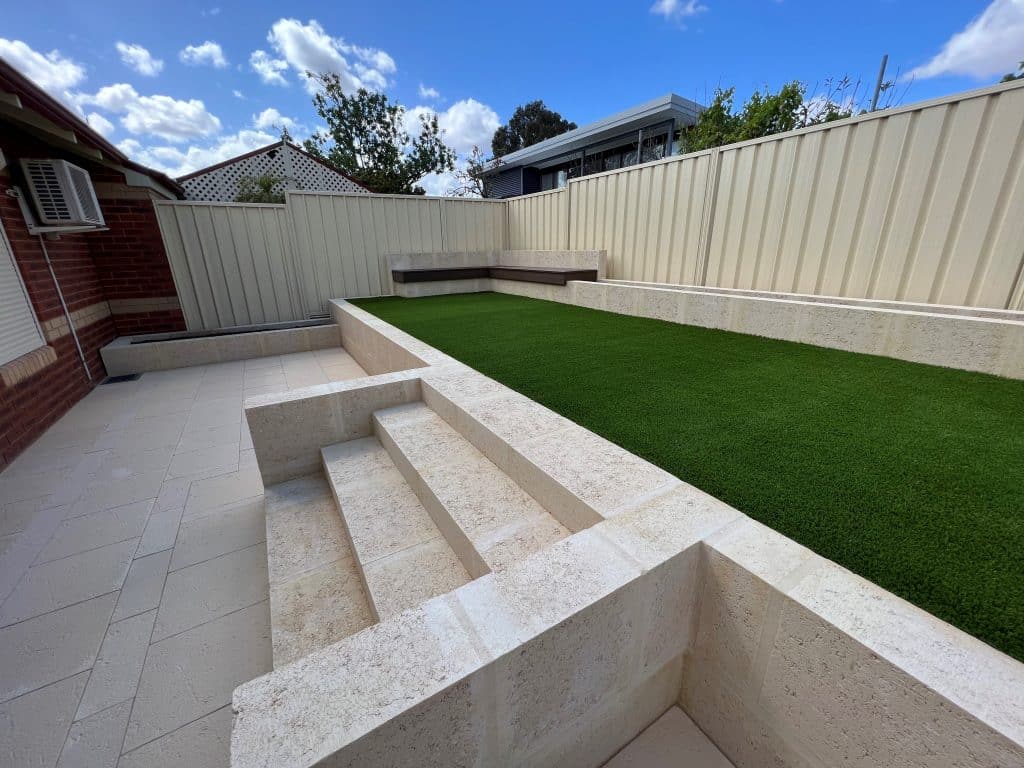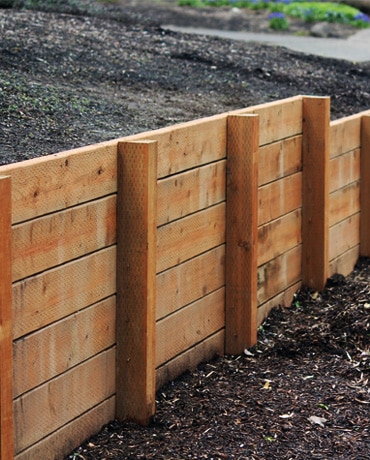Making Sure Architectural Honesty: The Value of Appropriately Constructed Maintaining Wall Surfaces in Stopping Incline Failure
In the realm of civil engineering and building, the value of correctly built keeping wall surfaces in preventing incline failure can not be downplayed. These structures act as essential safeguards versus the natural forces that can destabilize slopes and create potentially dreadful repercussions. Understanding the precise design considerations, building methodologies, and maintenance practices associated with maintaining wall surfaces is fundamental in guaranteeing their effectiveness and longevity. By exploring the detailed interplay between these aspects, a much deeper comprehension of the crucial role that preserving walls play in preserving architectural honesty and stopping incline failure arises. Retaining Walls Sunshine Coast.
Role of Retaining Walls in Stability
The necessity of maintaining walls in making sure incline security is paramount in civil engineering practices. Maintaining walls serve an important duty in avoiding soil disintegration, managing water overflow, and maintaining the structural integrity of slopes. By sustaining near-vertical or upright quality modifications, maintaining walls help to redistribute lateral stress applied by the soil, thus decreasing the danger of slope failure.
One trick feature of maintaining walls is to neutralize the force of gravity acting on the soil mass behind them. This is achieved through correct design and building and construction, which takes into consideration variables such as soil type, wall elevation, drain arrangements, and prospective additional charge loads. By successfully retaining soil within specified limits, these structures assist to maintain slopes and avoid landslides.
Additionally, keeping walls add to the looks of landscapes while giving practical benefits. They can create terraced levels for landscaping, assistance streets or frameworks on hillsides, and boost the general usability of sloped terrain. Fundamentally, retaining wall surfaces play a crucial duty in keeping slope stability and making certain the safety and longevity of civil engineering jobs.
Factors Influencing Wall Performance
Variables that affect the efficiency of keeping walls consist of dirt residential or commercial properties, wall layout, and outside lots. Soil residential or commercial properties play a critical duty in determining the stability and performance of a preserving wall surface. Variables such as soil kind, cohesion, inner rubbing angle, and groundwater problems can influence just how well a wall preserves the dirt behind it. The style of the preserving wall surface is one more vital factor that influences its performance. Proper wall style takes into consideration aspects like wall surface elevation, wall surface kind (e.g., gravity wall surfaces, cantilever walls), support products, drainage systems, and building and construction techniques to guarantee the wall surface can stand up to the lateral pressure exerted by the preserved dirt. Furthermore, exterior tons, such as additional charge loads from adjacent frameworks or website traffic, seismic pressures, and water pressure, should be meticulously assessed throughout the layout and construction stages to guarantee the wall can adequately stand up to these outside pressures. By taking into consideration these aspects adequately, engineers can create retaining wall surfaces that efficiently avoid incline failure and ensure long-term structural honesty.
Design Factors To Consider for Preserving Walls
Including the essential elements of soil residential or commercial properties and exterior loads into the architectural style procedure is necessary for developing efficient retaining wall surfaces that guarantee incline stability. When developing preserving wall surfaces, engineers should very carefully examine the features of the surrounding dirt, including its compaction, kind, and drainage homes. Comprehending these dirt homes is essential for establishing the ideal wall thickness, support, and height needed to stand up to the lateral stress exerted by the soil mass.
Furthermore, exterior loads such as surcharge tons from neighboring frameworks or web traffic, along with seismic forces, should be thought about blog during the layout stage. These loads can substantially impact the security and efficiency of a maintaining wall, requiring the usage of proper design strategies and materials to alleviate possible failing threats.
In addition, the choice of appropriate products, such as concrete, stone, or timber, need to align with the visual requirements and site-specific problems. Aspect of safety and security considerations, water drainage provisions, and building methods are likewise vital aspects that affect the total style and functionality of keeping wall surfaces in stopping slope failing. By very carefully taking into consideration these layout considerations, engineers can make sure the structural integrity and lasting security of retaining wall surfaces.

Building And Construction Best Practices for Durability
When building preserving walls for optimal toughness and long life, adherence to industry-standard methods and meticulous focus to information are vital. To make certain the resilience of a keeping wall, correct site prep work is essential. This consists of adequate compaction of the dirt, appropriate drainage systems, and making certain the wall's foundation is sound. Utilizing top quality products, such as concrete blocks or natural rock, is crucial for the long life of the framework. In addition, utilizing experienced specialists with experience in building retaining walls can substantially affect the durability of the end product.
Integrating reinforcement methods, such as geogrids or steel bars, can enhance the architectural honesty of the keeping wall and protect against prospective failures. By complying with these building finest methods, preserving walls can endure the examination of time and successfully stop slope failing.
Value of Proper Upkeep
Routine upkeep is essential for protecting the structural integrity and functionality of keeping wall surfaces gradually. Disregarding upkeep can lead to problems such as disintegration, splits, or even total failure of the wall surface, jeopardizing the security of the slope it supports. To ensure that maintaining walls remain to perform their designated feature effectively, routine evaluations must be conducted to determine any type of signs of damage. These evaluations can aid in discovering very early warning indications of possible issues, enabling timely repair work to be accomplished prior to the concerns intensify (Retaining Walls Sunshine Coast).

Final Thought
To conclude, preserving wall surfaces play an important role in making certain architectural honesty and protecting against slope failure. By considering variables influencing wall effectiveness, adhering to make factors to consider, following construction ideal methods, and executing correct upkeep, the toughness of keeping walls can be made best use of. Retaining Walls Sunshine Coast. It is vital to acknowledge the value of correctly built retaining walls in keeping security and stopping prospective threats connected with incline failing
Factors that influence the efficiency of retaining walls consist of soil homes, wall style, and outside lots. Proper wall surface style thinks about variables like wall elevation, wall type (e.g., gravity wall my link surfaces, cantilever wall surfaces), reinforcement materials, drain systems, and building strategies to make sure the wall can endure the lateral stress put in by the preserved dirt. By taking into consideration these factors thoroughly, engineers can build keeping walls that efficiently avoid incline best site failing and guarantee long-term architectural honesty.
Upkeep jobs may consist of getting rid of drainage systems to avoid water buildup behind the wall, repairing any type of visible splits or damages, and making sure that the wall is free from greenery that might apply stress on the structure. By considering factors influencing wall effectiveness, sticking to create factors to consider, adhering to construction ideal techniques, and executing proper maintenance, the sturdiness of maintaining walls can be taken full advantage of.